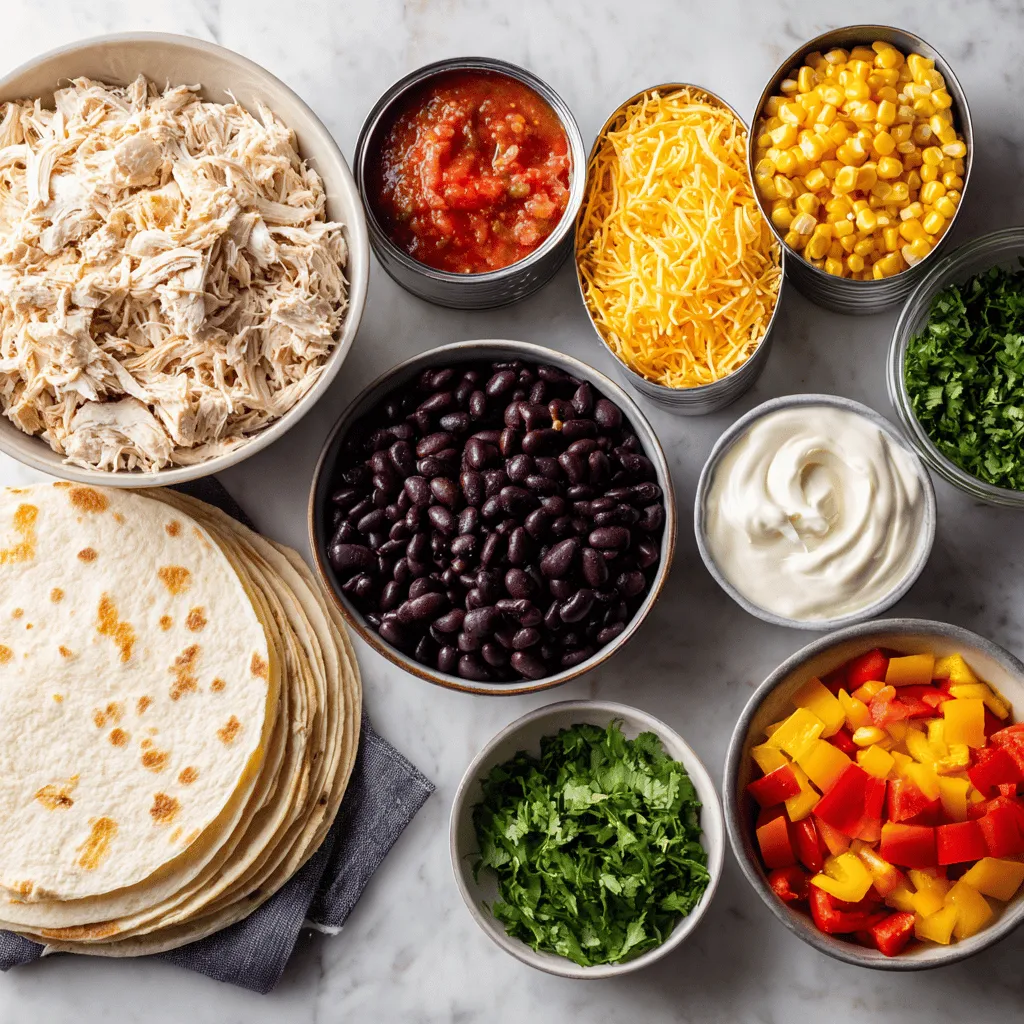Introduction
Explore the delicious world of homemade bread with this Savory Herb and Cheese Nan Bread recipe. This delightful dish combines the comforting texture of traditional naan with the fresh flavors of herbs and the gooey goodness of cheese. Perfect for accompanying your favorite Indian dishes or as a standalone snack, this recipe will elevate your cooking repertoire and impress your guests.
By making your own nan, you not only gain control over the ingredients but also enjoy the satisfaction of baking from scratch. The aroma of freshly baked bread wafting through your kitchen is an experience that simply can’t be matched. Let’s dive into this culinary journey and create a bread that is as pleasing to the palate as it is to the eye.
Recipe Overview
– Total Time: 1 hour 30 minutes
– Servings: 4
– Difficulty: Medium
Ingredients
– 2 cups all-purpose flour
– 1 teaspoon instant yeast
– 1 teaspoon sugar
– 1 teaspoon salt
– 1/2 cup warm water
– 1/4 cup plain yogurt
– 2 tablespoons olive oil
– 1/4 cup chopped fresh herbs (cilantro, parsley, or mint)
– 1 cup shredded cheese (mozzarella, cheddar, or a blend)
– Extra flour for dusting

Instructions
1. In a large mixing bowl, combine the all-purpose flour, instant yeast, sugar, and salt.
2. In a separate bowl, mix the warm water, yogurt, and olive oil. Gradually add this mixture to the dry ingredients.
3. Knead the dough on a floured surface for about 8-10 minutes until it becomes smooth and elastic.
4. Place the dough in a greased bowl, cover it with a damp cloth, and let it rest for 1 hour or until it doubles in size.
5. Once the dough has risen, punch it down and divide it into four equal portions.
6. Roll each portion into a circle, about 1/4 inch thick.
7. Sprinkle the chopped herbs and shredded cheese on one half of the rolled dough, then fold the other half over to create a pocket.
8. Pinch the edges to seal the filling inside securely.
9. Preheat a skillet or flat griddle over medium-high heat.
10. Cook each filled nan for 2-3 minutes on each side until golden brown and cooked through.
11. Serve warm, brushed with melted butter or ghee if desired.
Understanding the Origins of Nan Bread
Delve into the rich heritage of nan bread, tracing its roots back to South Asia. Learn about the traditional cooking methods, including the use of tandoors, and how this influences the flavor and texture of the bread.
Essential Ingredients for Savory Herb and Cheese Nan
– Overview of each ingredient’s role in the recipe
– Importance of using fresh herbs for vibrant flavor
– The impact of quality cheese on the overall taste
Step-by-Step Instructions for Perfect Nan Bread
– Detailed breakdown of the preparation process
– Importance of kneading and resting the dough for optimal texture
– Tips for shaping and filling the nan to enhance flavor and presentation
Cooking Techniques for Savory Nan
– Exploring the use of a skillet or flat griddle versus a tandoor
– Tips on achieving the perfect golden-brown crust
– Timing and temperature guidelines for cooking the nan

Serving Suggestions for the Ideal Dining Experience
Presentation Ideas to Elevate Your Dish
To make your Savory Herb and Cheese Nan Bread visually appealing, consider serving it on a rustic wooden board or a decorative platter. This not only enhances the presentation but also adds a touch of warmth to your dining table. Pair the bread with small bowls of vibrant chutneys or dips to create an inviting spread. Fresh herbs, such as cilantro or parsley, can be scattered around the board for a pop of color and freshness.
Suggestions for Complementary Sides
Enhance the flavor profile of your nan bread by offering complementary sides. A cooling yogurt dip, seasoned with spices like cumin and coriander, balances the savory elements of the bread. Additionally, fruit chutneys, such as mango or tamarind, provide a sweet contrast that enhances the overall experience. Consider serving a side salad with fresh greens and a tangy dressing to add a refreshing crunch.
Creative Plating Techniques
For a more sophisticated presentation, slice the nan bread into wedges and arrange them in a fan shape on individual plates. Drizzle with a bit of olive oil and sprinkle additional herbs or cheese on top just before serving. This not only makes the dish look gourmet but also allows your guests to easily grab their serving.
Nutritional Benefits of Savory Herb and Cheese Nan
Analysis of the Nutritional Content
The base ingredients of this nan bread, including flour, yogurt, and cheese, provide essential carbohydrates and protein. The addition of fresh herbs not only contributes flavor but also increases the nutritional value, offering vitamins and minerals that are beneficial for overall health.
Health Benefits of Fresh Herbs
Fresh herbs are more than just a flavor enhancer; they play a significant role in digestion and immunity. Herbs like cilantro and parsley are rich in antioxidants and have been known to promote healthy digestion, while others such as basil and oregano possess anti-inflammatory properties.
Balancing Indulgence with Moderation
While the savory herb and cheese nan is undoubtedly a treat, it’s important to enjoy it in moderation. This bread can be part of a balanced meal when paired with nutritious sides. By being mindful of portion sizes and complementing the dish with fresh vegetables or lean proteins, you can indulge without compromising your health goals.
Customizing Your Nan: Variations and Add-Ons
Ideas for Incorporating Different Herbs and Cheeses
One of the great aspects of this recipe is its versatility. Experiment with different herbs such as dill, thyme, or rosemary for unique flavor profiles. Similarly, you can substitute the cheese; try feta for a tangy twist or mozzarella for a milder taste.
Suggestions for Seasonal Ingredients
Take advantage of seasonal ingredients to add unique flavors to your nan bread. In the summer, consider adding sun-dried tomatoes or zucchini. In the fall, incorporate pumpkin puree or sage for a warm, comforting taste. Seasonal variations not only enhance the flavor but also keep the dish exciting throughout the year.
Adapting the Recipe for Dietary Restrictions
For those with dietary restrictions, this recipe can easily be adapted. Use gluten-free flour blends for a gluten-free version or consider using dairy-free cheese alternatives for a vegan option. With a few simple substitutions, everyone can enjoy the deliciousness of savory herb and cheese nan.
The Experience of Making Savory Herb and Cheese Nan at Home
Personal Anecdotes Related to Bread-Making
Making bread at home is a rewarding endeavor that connects you to the culinary traditions of many cultures. The process of kneading dough and watching it rise can be incredibly satisfying, and the aroma that fills your kitchen is unmatched.
The Joy and Satisfaction of Creating Homemade Food
There is a unique joy in creating food from scratch. The effort you put into making your nan bread translates into a tangible product that can be shared with loved ones. Each bite becomes a testament to your culinary skills and creativity.
Encouraging Exploration of Culinary Skills
I encourage you to explore your culinary abilities and to experiment with this savory nan recipe. Don’t be afraid to make it your own—adjust the herbs, try different cheeses, and incorporate your favorite flavors. The kitchen is a space for creativity, and every attempt, whether perfect or not, brings you one step closer to mastering the art of bread-making.
Conclusion
In conclusion, this Savory Herb and Cheese Nan Bread recipe is not just a meal but an experience that celebrates the joy of cooking. By following this comprehensive guide, you can create a delicious and visually appealing bread that is perfect for any occasion. Whether enjoyed with a hearty curry or as a standalone snack, this recipe will become a cherished addition to your cooking repertoire. Enjoy the warmth and comfort of homemade nan bread, infused with the freshness of herbs and the richness of cheese.

